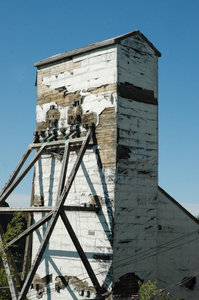It’s every miner’s nightmare: A roof collapse.
The number of miners in the U.S. who were killed in underground mine accidents has seen a significant decrease since 2007. To make news even better, deaths from retreat mining have virtually dropped to zero, according to the United States Department of Labor (DOL).

Usually, it is these kinds of accidents that are the number one cause of mining injuries and fatalities.
Our Boston workers’ compensation attorneys understand that the Preventative Roof/Rib Outreach Program (PROP) works to educate mine operators and miners about the dangers that they can face on the job each and every day — particularly about rib falls in underground coal mines and the dangers of roof falls. From 2003 to 2007, there were close to 30 miners who were killed in these kinds of accidents. Throughout the five years following (through 2012), the number of fatalities from these kinds of accidents saw a more than 30 percent reduction, only witnessing 19 fatalities. More specifically, the number of fatalities from retreat mining dropped down to zero from 2008 to 2012.
When we talk about retreat mining, we’re talking about the practice of mining and leaving those pillars that stand to support the roof of the mine. When mining operations are done in the area, the miners carefully collapse and take down the pillars as the work moves from that area of the mine. Unfortunately, this is a risky scenario, especially when all of the safety precautions are not executed properly.
In 2012, there were more than 375 miners who were injured from a rib and roof fall. Of these injuries, close to 150 of them were roof-bolter operators that were injured from roof falls. Another 20 of them were roof-bolters operators who were injured from rib falls.
Knowing this, officials with the Mine Safety and Health Administration (MSHA) will be focusing on these individuals safety in their new line of safety and information posters. In addition, they’ll be covering accidental activation, pinch points and the accidents that are caused from hands-on drilling.
According to the DOL, each site should have a drilling procedure. This procedure should first lay out the drill pattern. Then, drill the second row back from the face of the high wall. The vibrations from the drilling with help to make the defects at the edge of the wall more apparent. Once this is done, your best bet is to once again look over the ground surface for and separation or cracks before drilling the first row of holes. When you are drilling the first row, you should use the holes that were already drilled as a tie-off for the location of a T bar. You should never tie-off to a drill. If the wall goes down, so will the drill and so will you.
If you or someone you love has been injured on the job in Massachusetts, call Jeffrey Glassman Injury Lawyers for a free and confidential consultation to discuss your workers’ compensation claim– (617) 777-7777.
More Blog Entries:
New England Work Injuries and the Risk of NOISE in the Workplace, Massachusetts Workers’ Compensation Lawyers Blog, August 13, 2013
 Massachusetts Workers Compensation Lawyers Blog
Massachusetts Workers Compensation Lawyers Blog

